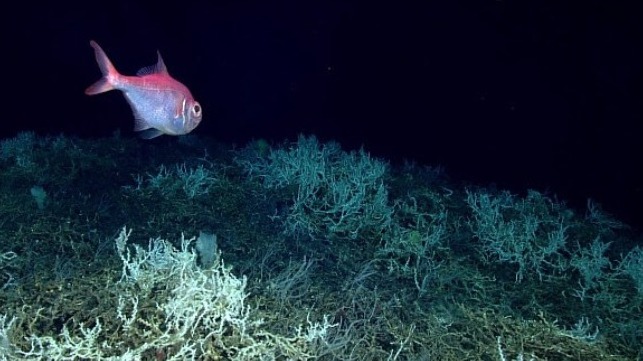Research Partners Find Six Million Acres of Deep-Sea Coral off Florida

NOAA and a consortium of research partners have discovered and mapped a vast deep-sea coral reef off the east coast of the United States. It is the likeliest habitat of its kind ever found, according to the consortium's newly-published study.
The team used three different multibeam sonar surveys to map the extent of the reef system. NOAA contributed the largest share of the data. Together, these survey campaigns covered almost all of the Blake Plateau, a rise located about 90 nautical miles off Florida, Georgia and South Carolina.
The total area surveyed is about the size of Florida, and the reef covered about 6.4 million acres - an area about the size of Vermont. They used an automated classification system to identify coral mounds in the survey data and found 83,000 probable hits. These mounds are distributed over an area about 280 nautical miles long and 60 nautical miles wide. The surveys were backed up and validated using 23 submersible dives.
Scientists dubbed the densest area of coral "Million Mounds" for its dense accumulation of the stony coral desmophyllum pertusum. These corals form large mounds that provide an important habitat for fish, including shelter for rearing young hatchlings. Some of these fish are commercially important for East Coast fisheries.
“For years we thought much of the Blake Plateau was sparsely inhabited, soft sediment, but after more than 10 years of systematic mapping and exploration, we have revealed one of the largest deep-sea coral reef habitats found to date anywhere in the world,” said Kasey Cantwell, operations chief for NOAA Ocean Exploration.
In a statement, study lead author Derek Sowers, Ph.D. said that the result showed how interagency partnerships could help the quest to map the 50 percent of U.S. waters that have yet to be mapped in high resolution.
NOAA added that the results will help guide policy on sustainable use and management of ocean resources in this area.
No comments:
Post a Comment